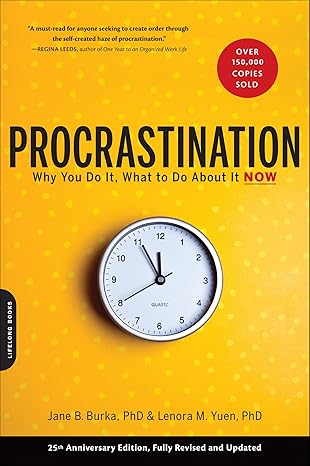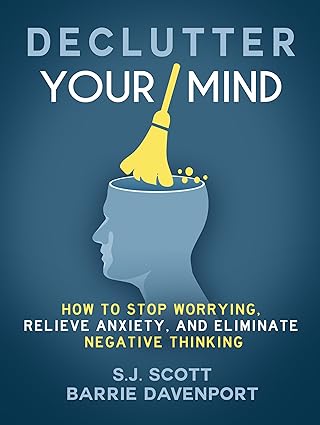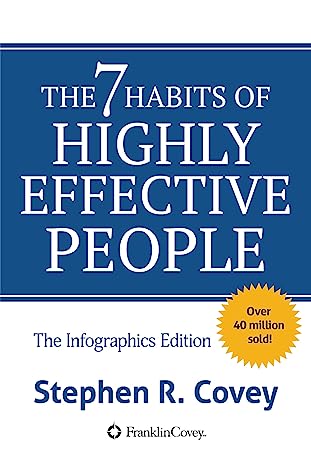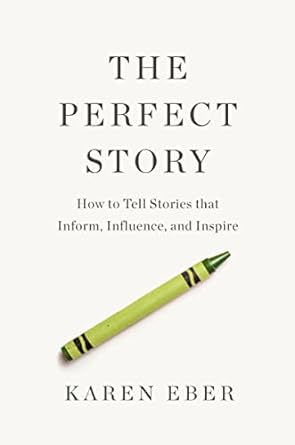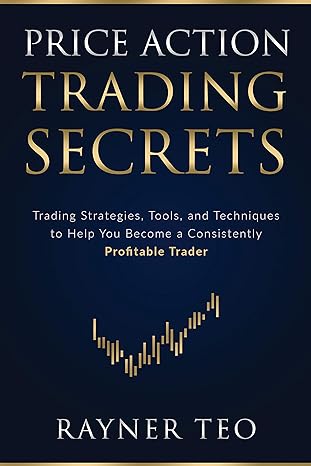
Bad Habits No More: 25 Steps to Break Any Bad Habit
We all have a specific bad habit we'd like to break. Odds are, you've tried in the past and maybe you were successful for a few days. Then something unexpected came up where you slipped for a day or two. One mistake snowballs into a series of setbacks. Eventually you give up on the idea of making a habit change simply because it's too difficult to do.
It doesn't matter if you've failed with your habit efforts in the past. It doesn't mean you're lazy or weak-willed. It means you didn't have the right tools for making a lasting habit change.
What you need is a strategy for identifying your worst habits and learning how to overcome them. That solution is a book called: "Bad Habits No More: 25 Steps to Break ANY Bad Habit."
BEST DEALS

About the Author
"Build a Better Life - One Habit at a Time"
Getting more from life doesn't mean following the latest diet craze or motivation program. True success happens when you take action on a daily basis. In other words, it's your habits that help you achieve goals and live the life you've always wanted.
In his books, S.J. provides daily action plans for every area of your life: health, fitness, work and personal relationships. Unlike other personal development guides, his content focuses on taking action. So instead of reading over-hyped strategies that rarely work in the real-world, you'll get information that can be immediately implemented.
When not writing, S.J. likes to read, exercise and explore the different parts of the world
Learn more by scrolling down the page and check out his books on developing positive daily habits...
Read Sample
PART I : LAYING THE FOUNDATION FOR A HABIT CHANGE
Step #1: Know the Difference between
Bad Habits and Addictions
It’s important to start with an extreme example of bad habits—addictions.
Frankly, it’s easy to fall into the trap of lying to ourselves about a negative routine. You might think an action (like drinking) is an innocent thing that “sometimes” gets out of control. However, the people around you might have a different opinion. Perhaps they feel this habit is the sign of a deep-seated addiction that needs immediate attention.
To be honest, you can only break some habits by following the plan in this book. Others are the result of addictions that might require you to seek out professional counseling or join an organization that has a strong support system.
Do you have an addiction?
The following questions will help you determine the true answer.
Do you:
1. Experience withdrawal symptoms when you stop doing the behavior (e.g. lack of focus, anger, frustration or insomnia)?
2. Stop doing the activities you once found enjoyable to engage in this habit instead?
3. Go on binges whenever you do the habit?
4. Keep a stash or supply of the product for emergencies (i.e. hiding bottles of alcohol throughout your home)?
5. Obsess about doing the activity to the point where it interferes with your daily routine?
6. Have financial difficulties because you’ve spent all of your money on the activity?
7. Have trouble limiting the activity? For instance, one pint turns into a binge-drinking session that ends with you blacking out.
8. Have health issues directly related to this activity?
9. Engage in risky behavior whenever doing this activity?
10. Do the activity as a way to deal with stress and emotional problems?
11. Deny or hide your behavior from others?
12. Damage your interpersonal relationships because of this activity?
People who suffer from alcoholism, drug addiction, binge eating, chain smoking and eating disorders usually experience some or all of these symptoms. It’s not an all-or-nothing checklist, so if you read it and some of the scenarios sound familiar, then you might want to seek out a professional solution to your possible addiction.
Here are few ways to do this:
• Talk to a psychologist or psychiatrist who specializes in addictions.
• Join a group like NA (Narcotics Anonymous) or AA (Alcoholics Anonymous).
• Join a weight-loss group that emphasizes permanent life changes instead of fad diets.
• Ask your doctor about different (non-addictive) ways to battle cravings.
Don’t be afraid to seek help from others. You might have an addiction that you can’t overcome by following a simple checklist. Odds are, if you think you have a real problem, then it might be time to get the assistance you really need.
Step #2: Focus on One Habit at a Time
Now it’s time to prepare for the habit change. Odds are you’ve tried to break this routine in the past. In all likelihood, you failed because you didn’t have a plan or relied too much on willpower.
Failure in the past doesn’t mean you’ll fail in the future. Usually it’s a direct result of not having a solid strategy for overcoming the habit. In other words, you didn’t follow that age-old adage:
“When you fail to plan, you plan to fail.”
So, before anything else, take time to understand what you’re giving up; then plan for the resistance you’ll experience along the way.
This goes back to the conversation about ego depletion. Remember—you have a limited amount of willpower every day. When it’s depleted, it’s hard to control your impulses.
An important part of this plan is to focus on changing one habit at a time. Think of the New Year’s resolutions many people make. They usually start the year with a lengthy list of habits they’d like change. Instead of focusing on one behavior, they try to fix their entire lives—all on the first of January.
People who make New Year’s resolutions typically fail because it’s almost impossible to change multiple habits at the same time. Most don’t have the willpower necessary to manage multiple new routines. As a result, one failure often snowballs into multiple failures when someone attempts to juggle several new routines at the same time. It’s not unusual for people to get so frustrated with one new routine that they give up on all their new routines.
My point?
Even if you want to change multiple areas of your life, it’s best to commit to one habit change at a time. That way, you can focus all your mental energy on making one change. In the next step, you’ll learn how to do this.
CASE STUDY
As I mentioned in the introduction, the best way to explain the steps in this book is to give you specific examples of how I implemented each step to eliminate a habit I once engaged in on a daily basis.
Like many people, I spend a lot of time on the Internet and immersed in the digital world in general. This is usually a positive habit because it helps me maintain a high level of productivity; however, I eventually developed the bad habit of spending too much time on my cellphone when I wasn’t in front of a computer. By scanning email, looking at business stats, reading pointless “click bait” articles or checking social media, I once wasted a lot of my time on my cellphone.
In May 2014, I read a great article about the idea of taking “digital sabbaticals.” The idea here is to dedicate a day every week (or month) to completely unplug from the digital world. While I frequently do this during the summertime, I decided to take this idea and create a “cellphone sabbatical habit” where I completely disconnect for most of the day.
Obviously, this is a vague outcome that’s almost impossible to track. But as you’ll see later in the book, I was able narrow down this concept and turn it into an actionable strategy. As a result, I no longer fiddle around my phone when I’m trying to relax.
Step #3: Commit to a 30-Day Habit Challenge
There’s conflicting information about how long it takes to make a lasting habit change. Many people believe it takes 21 days, but a study by Phillippa Lally and her research team showed it takes 66 days to create a brand-new routine.
My opinion is it takes at least a month to break a bad habit, so a great way to get started is to commit to a 30-day habit challenge (30DHC).
The 30DHC doesn’t come from a specific scientific study. Instead, it’s something I picked up from Steve Pavlina’s website. He compares this concept to a trial version of software. You don’t actually “buy into” the habit change until the end of the test period. Only then will you decide to keep it or ditch it.
As Pavlina says, it’s hard to get through those first few weeks of a habit change. That’s the time when most people succumb to their impulses. Once you get past this critical period, it becomes easier to stick to a new routine.
In a way, the 30DHC tricks your mind into forming a new habit. It’s easy to do something unpleasant if you think it’s only for a month. And when the time expires, you’ll be close to making a permanent change.
The 30DHC also gives you an “out” if the new habit isn’t working. At the end of the month, you can decide if it’s worth continuing. That said, what usually happens is you want to maintain that momentum and keep going, even at the end of the 30-day period.
What I really like about the 30DHC is the confidence you gain. You know what it’s like to follow a habit on a day-to-day basis, so you develop an intuitive understanding of both your positive and negative triggers. This information is important when you focus on improving your results.
To get started with the 30DHC, I recommend the following action plan:
(1) Have a Reason Why
Start by journaling about this habit. Give a specific reason why it matters. What you write is irrelevant. The important thing is to know why you want to make this change and what result you expect from this experience.
(2) Obstacles
Every habit has a trigger. This is a thought, cue or action that makes you want to do the bad habit. Your job is to identify any trigger that pops up. Use your journal to track triggers by writing them as they occur. Include the following important information: Where are you? Who is with you? What are you doing? What thoughts are in your head? This data is very important for eliminating the bad habit and replacing it with something positive. (We’ll talk more about this in a later step.)
(3) Action Plan
Write down an overview of the habit, along with the step-by-step actions you’ll take. Be sure to include any tools or environmental cues that will help or hinder your completion of this new routine.
(4) Results
Track your success with a daily metric. The tool I use is Lift.do, which tracks all my current habits. You can track a habit in a variety of ways:
• Yes or No (Did you do it today or not?)
• Quantity (How many times did you complete the habit?)
• Number (Are you over or under the set “quota”?)
• Time (How long did you spend on this habit every day?)
Using the daily metric is the key to forming a permanent habit. There will be days where you’ll fall off the wagon. The important thing is to track these lapses and carry on.
Copyright: Oldtown Publishing LLC

